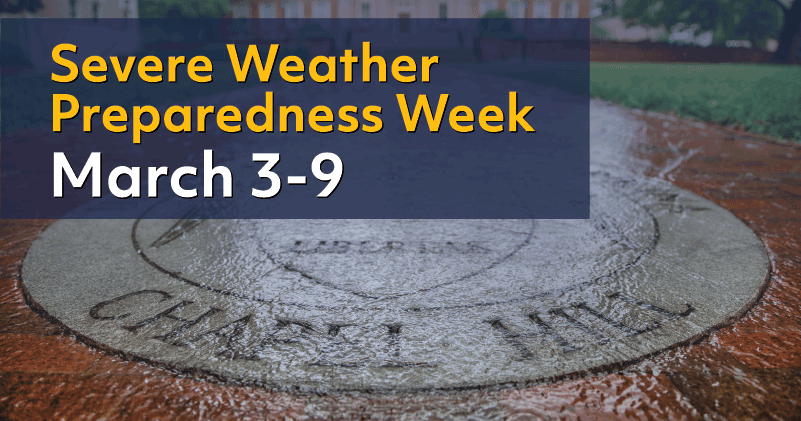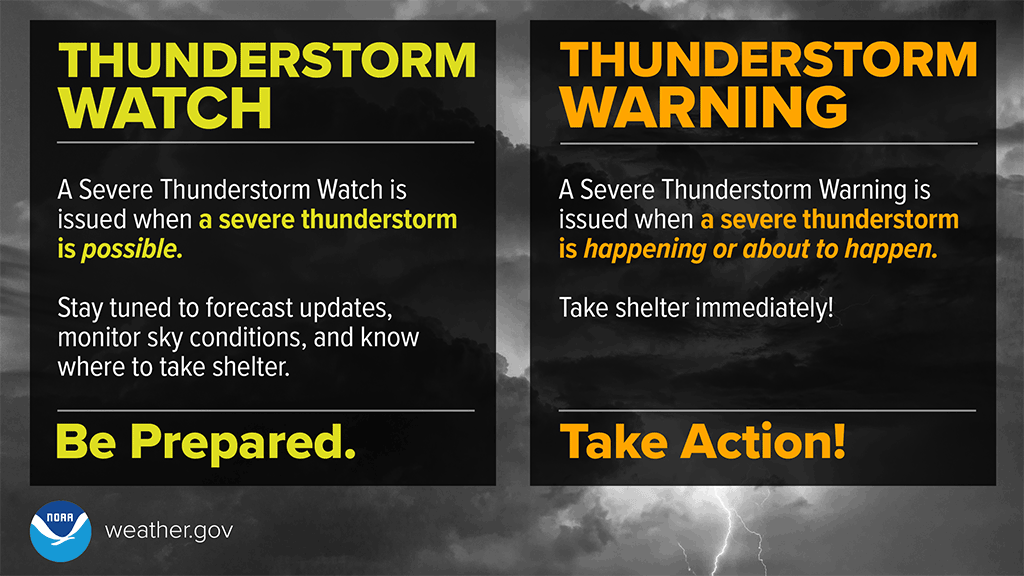
Topics
- Monday: Severe Thunderstorms and Tornadoes
- Tuesday: Severe Weather Alerts and Tornado Drill
- Wednesday: High Winds, Hail and Tornadoes
- Thursday: Lightning
- Friday: Flash Floods
- Saturday: Make a Plan
A thunderstorm is a local storm that produces lightning and thunder. Thunderstorms are often accompanied by showery rain and gusty winds, and may also bring hail or snow. Thunderstorms occur most frequently during the spring and summer, but they are also possible in the fall and winter. North Carolina experiences about 40 to 50 thunderstorm days per year. About 10 percent of thunderstorms are classified as severe – one that produces hail at least an inch in diameter, has winds of 58 miles per hour or stronger, or produces a tornado.
Thunderstorms are sometimes underestimated as a serious weather threat, but they can be deadly. Strong winds can turn tree branches and ordinary loose objects into dangerous projectiles. Lightning can strike up to 10 miles away from a storm. Make sure to get inside at the first sign of thunder or lightning, and stay inside until at least 30 minutes after the last sign of thunder or lightning.
Tornadoes are nature’s most violent storms. Spawned from powerful thunderstorms, tornadoes can cause fatalities and devastate a neighborhood in seconds. A tornado appears as a rotating, funnel-shaped cloud that extends from a thunderstorm to the ground with whirling winds that can reach 300 miles per hour. Damage paths can be in excess of one mile wide and 50 miles long. Some tornadoes are clearly visible, while rain or nearby low-hanging clouds obscure others. Sometimes, tornadoes develop so rapidly that little, if any, advance warning is possible.
Know when to be prepared and when to take action. A Severe Thunderstorm WATCH means “Be Prepared.” Stay informed and be ready to act, because severe thunderstorms are possible. A Severe Thunderstorm WARNING means “Take Action!” Take shelter in a strong building, because severe weather is occurring or will occur shortly.

